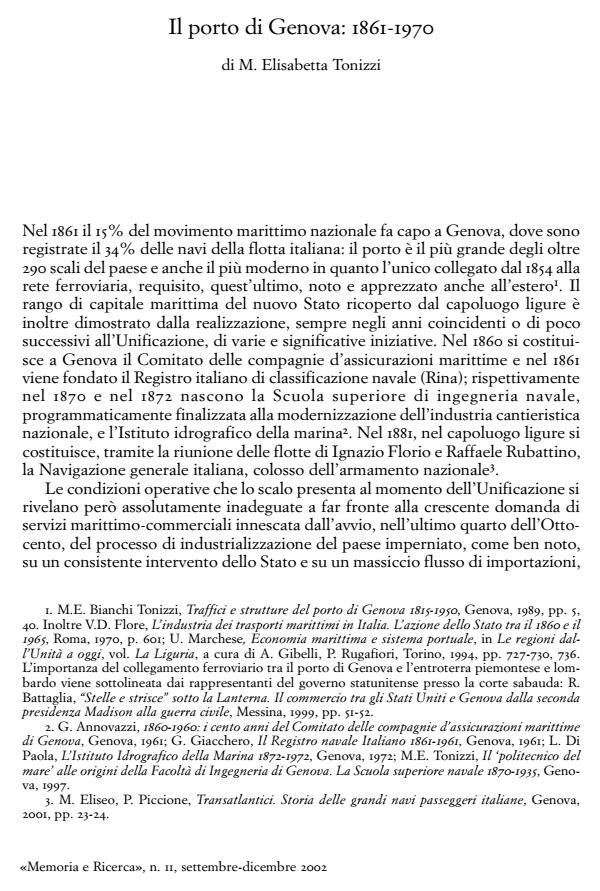Il porto di Genova: 1861-1970
Journal title MEMORIA E RICERCA
Author/s M. Elisabetta Tonizzi
Publishing Year 2002 Issue 2002/11
Language Italian Pages 18 P. File size 221 KB
DOI
DOI is like a bar code for intellectual property: to have more infomation
click here
Below, you can see the article first page
If you want to buy this article in PDF format, you can do it, following the instructions to buy download credits

FrancoAngeli is member of Publishers International Linking Association, Inc (PILA), a not-for-profit association which run the CrossRef service enabling links to and from online scholarly content.
At the time of Unification (1861) Genoa, whose port was the largest and most modern of the Peninsula, became the maritime capital of the Italian State and still holds this leading position. In the late 19th and early 20th centuries, when the Italian industrial take-off occurred, Genoa not only became one of most industrialised cities but also the maritime terminal of the country’s most economically advanced area, the so-called ‘industrial triangle’. This article examines, from a quantitative and qualitative standpoint, shipping, cargo and passenger traffics trends and the evolution of the port’s functional role during the period under consideration. It also attempts to outline the economic and occupational magnitude of the Genoese commercial and industrial port-related activities. Moreover, the analysis is focused on the port’s maritime infrastructures and cargo handling equipment projected and created over a century and on the difficult relationship between the port system and the urban context.
M. Elisabetta Tonizzi, Il porto di Genova: 1861-1970 in "MEMORIA E RICERCA " 11/2002, pp , DOI: